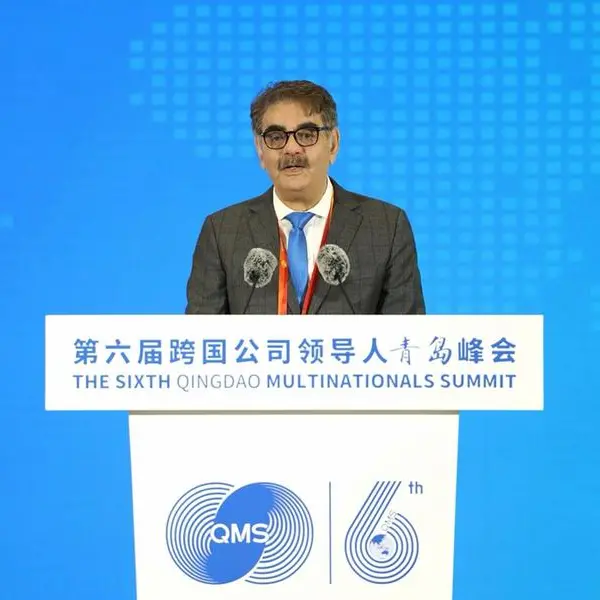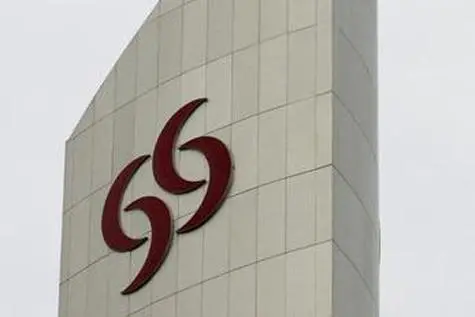- HFpEF has been classified as “the single largest unmet need in cardiovascular medicine”[i] based on prevalence, poor outcomes and the absence of clinically proven therapies to date[ii]
- With approval, empagliflozin would become the first and only clinically proven therapy to improve outcomes for the full spectrum of heart failure patients regardless of ejection fraction
Dubai, UAE – The EMPEROR-Preserved Phase III trial met its primary endpoint, establishing empagliflozin as the first and only therapy to significantly reduce the risk of the composite of cardiovascular death or hospitalization for heart failure in adults, with or without diabetes, who live with heart failure with preserved ejection fraction (HFpEF). Boehringer Ingelheim and Eli Lilly and Company (NYSE: LLY) announced the topline results in July 2021. When added to the EMPEROR-Reduced trial results, these findings demonstrate empagliflozin’s efficacy in all forms of heart failure regardless of ejection fraction. The safety profile was generally consistent with the known safety profile of empagliflozin.
“The EMPEROR-Preserved results represent a significant breakthrough in cardiovascular medicine and a new hope for people with HFpEF, which is an increasingly prevalent public health issue. HFpEF has long been the most challenging form of heart failure to treat,” said Stefan Anker, Professor of Cardiology, Charité Campus Virchow-Klinikum, Germany, and EMPEROR-Preserved Principal Investigator. “Building on previous results from the EMPA-REG-OUTCOME trial, and the EMPEROR-Reduced trial in heart failure with reduced ejection fraction, the EMPEROR-Preserved findings demonstrate that empagliflozin reduces cardiovascular death or hospitalization for heart failure and has the potential to transform the care of people living with heart failure.”
Heart failure poses a significant global disease burden: more than 60 million patients worldwide have heart failure and half of them have HFpEF.[iii],[iv] Heart failure is a leading cause of hospitalization and is becoming increasingly prevalent in Western countries due to aging populations.3 The risk of death in people with heart failure rises with each hospital admission.[v] Heart failure with left ventricular preserved ejection fraction occurs when the left ventricle of the heart is unable to fill properly, resulting in less blood being pumped to the body.[vi]
“Heart failure is a prevalent and life-limiting condition and studies[vii] show that this condition affects patients in the Middle East a decade earlier in comparison to Western countries,” said Mohammed Al-Tawil, Regional Managing Director and Head of Human Pharma, Boehringer Ingelheim Middle East, Turkey and Africa. “There are limited treatment options for patients who have heart failure, especially with preserved ejection fraction, and these results present opportunities to better serve the needs of patients. Together with the earlier EMPEROR-Reduced trial results, we now have a potential solution that treats the full spectrum on heart failure.”
“Prior to the EMPEROR-Preserved topline results, there were no clinical studies demonstrating reduced risk of heart failure hospitalizations or cardiovascular mortality for all adults for this particular condition. This is a significant milestone with Empagliflozin as studies continue to explore its effect across a wider spectrum of cardio-renal-metabolic diseases. With these results, we can look forward to being able to expand the use of empagliflozin in the treatment for heart failure, whether related or unrelated to Type 2 Diabetes,” said Dr Mohamed Meshref, Medical Director for Middle East Turkey and Africa, Boehringer Ingelheim.
The EMPEROR-Preserved trial investigated empagliflozin 10 mg compared to placebo.[viii] Full results from the EMPEROR-Preserved trial are scheduled for presentation at the European Society of Cardiology (ESC) Congress 2021 on 27 August.
These results add to previous findings from the EMPEROR-Reduced Phase III trial, which showed that in patients with heart failure with reduced ejection fraction (HFrEF) with or without Type 2 diabetes, empagliflozin significantly reduced the combined relative risk of cardiovascular death or hospitalization for heart failure by 25 percent, compared to placebo.[ix] Together, these studies demonstrate the benefits of empagliflozin for patients across the full heart failure spectrum (including HFrEF and HFpEF).
The EMPEROR-Reduced results formed the basis of the recent approval of a new indication for empagliflozin for the treatment of adults with HFrEF by the European Commission.[x] A supplemental New Drug Application (sNDA) for empagliflozin to reduce the risk of cardiovascular death or hospitalization for heart failure in adults with HFrEF has been submitted to the U.S. Food and Drug Administration (FDA), with a decision expected later this year.[xi] Empagliflozin is currently indicated for the treatment of adults with insufficiently controlled type 2 diabetes (additionally, in the E.U. for the treatment of adults with HFrEF). 9,[xii],[xiii],[xiv]
Research is ongoing regarding empagliflozin’s effects on hospitalization for heart failure and mortality in post-myocardial infarction (heart attack) patients with high risk of heart failure.[xv] Empagliflozin is also currently being investigated in chronic kidney disease.[xvi]
About the EMPEROR heart failure studies7,[xvii]
The EMPEROR (EMPagliflozin outcomE tRial in patients with chrOnic heaRt failure) chronic heart failure studies were two Phase III, randomized, double-blind trials that investigated once-daily empagliflozin compared to placebo in adults with chronic HFrEF or HFpEF, with or without diabetes:
- EMPEROR-Reduced[NCT03057977] investigated the safety and efficacy of empagliflozin in patients with chronic HFrEF.
- Primary endpoint: time to first event of adjudicated cardiovascular death or adjudicated hospitalization for heart failure
- Number of patients: 3,730
- Completion: 2020
- EMPEROR-Preserved[NCT03057951] investigated the safety and efficacy of empagliflozin in patients with chronic HFpEF.
- Primary endpoint: time to first event of adjudicated cardiovascular death or adjudicated hospitalization for heart failure
- Number of patients: 5,988
- Completion: 2021
Ejection fraction is a measurement of the percentage of blood the left ventricle pumps out with each contraction.[xviii] When the heart relaxes, the ventricle refills with blood.
About heart failure
Heart failure is a progressive, debilitating and potentially fatal condition that occurs when the heart cannot supply adequate circulation to meet the body’s demands for oxygenated blood or to do so requires increased blood volume leading to fluid accumulation (congestion) in the lungs and peripheral tissues.[xix] It is a common condition affecting over 60 million people worldwide and expected to increase as the population ages.3,4 Heart failure is highly prevalent in people with diabetes;[xx] however, approximately half of all people with heart failure do not have diabetes.[xxi]
About cardio-renal-metabolic conditions
Boehringer Ingelheim are driven to transform care for people with cardio-renal-metabolic conditions, a group of interconnected disorders that affect more than one billion people worldwide and are a leading cause of death.4
The cardiovascular, renal and metabolic systems are interconnected, and share many of the same risk factors and pathological pathways along the disease continuum. Dysfunction in one system may accelerate the onset of others, resulting in progression of interconnected diseases such as type 2 diabetes, cardiovascular disease, heart failure, and kidney disease, which in turn leads to an increased risk of cardiovascular death. Conversely, improvements in one system can lead to positive effects throughout the others.[xxii],[xxiii],[xxiv]
Through our research and treatments, our goal is to support people’s health, restoring the balance between the interconnected cardio-renal-metabolic systems and reducing their risk of serious complications. As part of our commitment to those whose health is jeopardized by cardio-renal-metabolic conditions, we will continue embracing a multidisciplinary approach towards care and focusing our resources on filling treatment gaps.
About empagliflozin
Empagliflozin is an oral, once-daily, highly selective sodium-glucose cotransporter 2 (SGLT2) inhibitor and the first type 2 diabetes medicine to include cardiovascular death risk reduction data in its label in several countries.11,12,13
About Boehringer Ingelheim
Boehringer Ingelheim is working on breakthrough therapies that improve the lives of humans and animals. As a leading research-driven biopharmaceutical company, the company creates value through innovation in areas of high unmet medical need. Founded in 1885 and family-owned ever since, Boehringer Ingelheim takes a long-term perspective. Around 52,000 employees serve more than 130 markets in the three business areas, Human Pharma, Animal Health, and Biopharmaceutical Contract Manufacturing. Learn more at www.boehringer-ingelheim.com.
About Eli Lilly and Company
Lilly is a global health care leader that unites caring with discovery to create medicines that make life better for people around the world. We were founded more than a century ago by a man committed to creating high-quality medicines that meet real needs, and today we remain true to that mission in all our work. Across the globe, Lilly employees work to discover and bring life-changing medicines to those who need them, improve the understanding and management of disease, and give back to communities through philanthropy and volunteerism. To learn more about Lilly, please visit us at lilly.com and lilly.com/newsroom.
Intended audiences
This press release is issued from the Boehringer Ingelheim Regional Headquarters in Dubai, UAE, and is intended to provide information about Boehringer Ingelheim’s global business. Please be aware that information relating to the approval status and labels of approved products may vary from country to country, and other press releases on this topic may have been issued in the countries where Boehringer Ingelheim and Eli Lilly and Company do business. This press release contains forward-looking statements (as that term is defined in the Private Securities Litigation Reform Act of 1995) about clinical trials to evaluate empagliflozin as a treatment for adults with heart failure and reflects Lilly's current belief. However, as with any pharmaceutical product, there are substantial risks and uncertainties in the process of development and commercialization. Among other things, there can be no guarantee that future study results will be consistent with the results to date or that empagliflozin will receive additional regulatory approvals. For further discussion of these and other risks and uncertainties, see Lilly's most recent Form 10-K and Form 10-Q filings with the United States Securities and Exchange Commission. Except as required by law, Lilly undertakes no duty to update forward-looking statements to reflect events after the date of this release. diabetes mellitus and associated chronic kidney disease. Nat Rev Nephrol. 2015;12:73–81.
© Press Release 2021
Disclaimer: The contents of this press release was provided from an external third party provider. This website is not responsible for, and does not control, such external content. This content is provided on an “as is” and “as available” basis and has not been edited in any way. Neither this website nor our affiliates guarantee the accuracy of or endorse the views or opinions expressed in this press release.
The press release is provided for informational purposes only. The content does not provide tax, legal or investment advice or opinion regarding the suitability, value or profitability of any particular security, portfolio or investment strategy. Neither this website nor our affiliates shall be liable for any errors or inaccuracies in the content, or for any actions taken by you in reliance thereon. You expressly agree that your use of the information within this article is at your sole risk.
To the fullest extent permitted by applicable law, this website, its parent company, its subsidiaries, its affiliates and the respective shareholders, directors, officers, employees, agents, advertisers, content providers and licensors will not be liable (jointly or severally) to you for any direct, indirect, consequential, special, incidental, punitive or exemplary damages, including without limitation, lost profits, lost savings and lost revenues, whether in negligence, tort, contract or any other theory of liability, even if the parties have been advised of the possibility or could have foreseen any such damages.



















